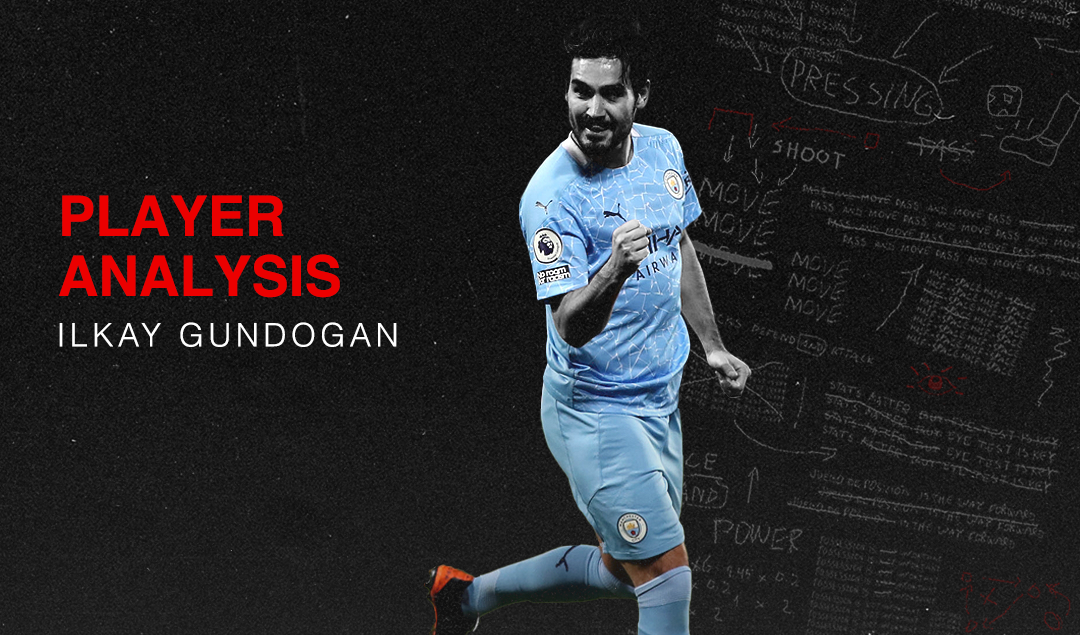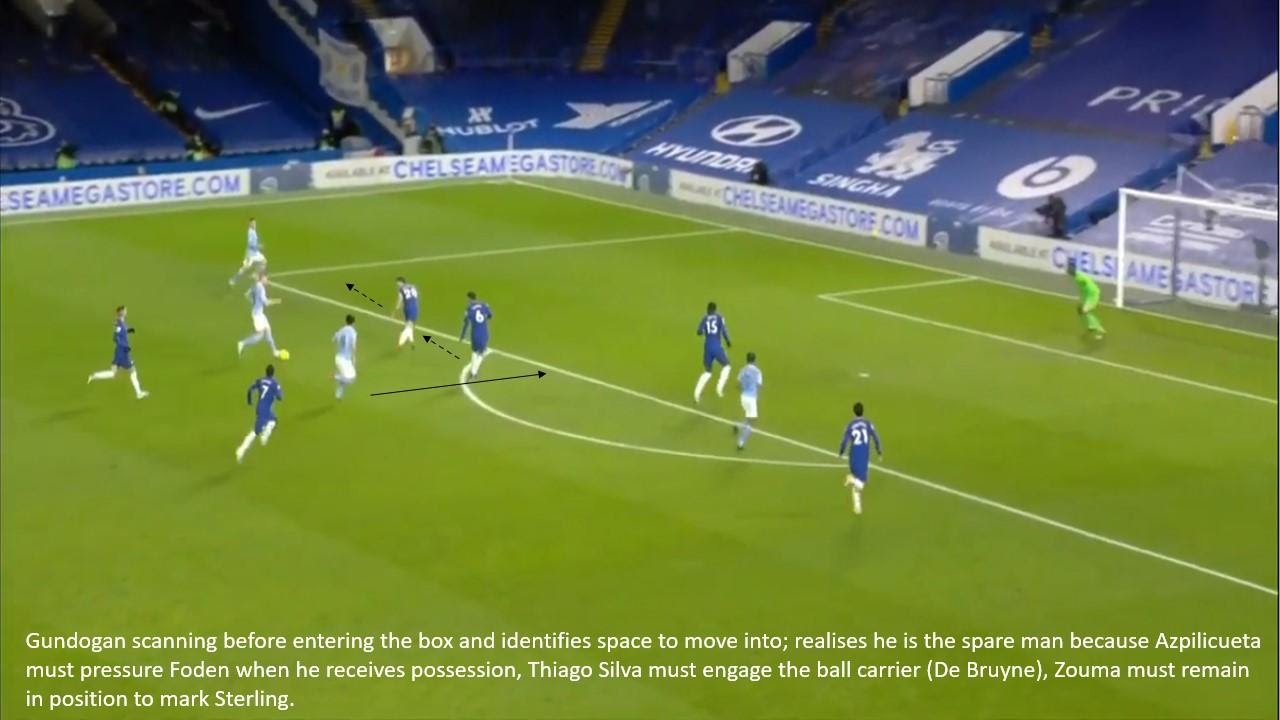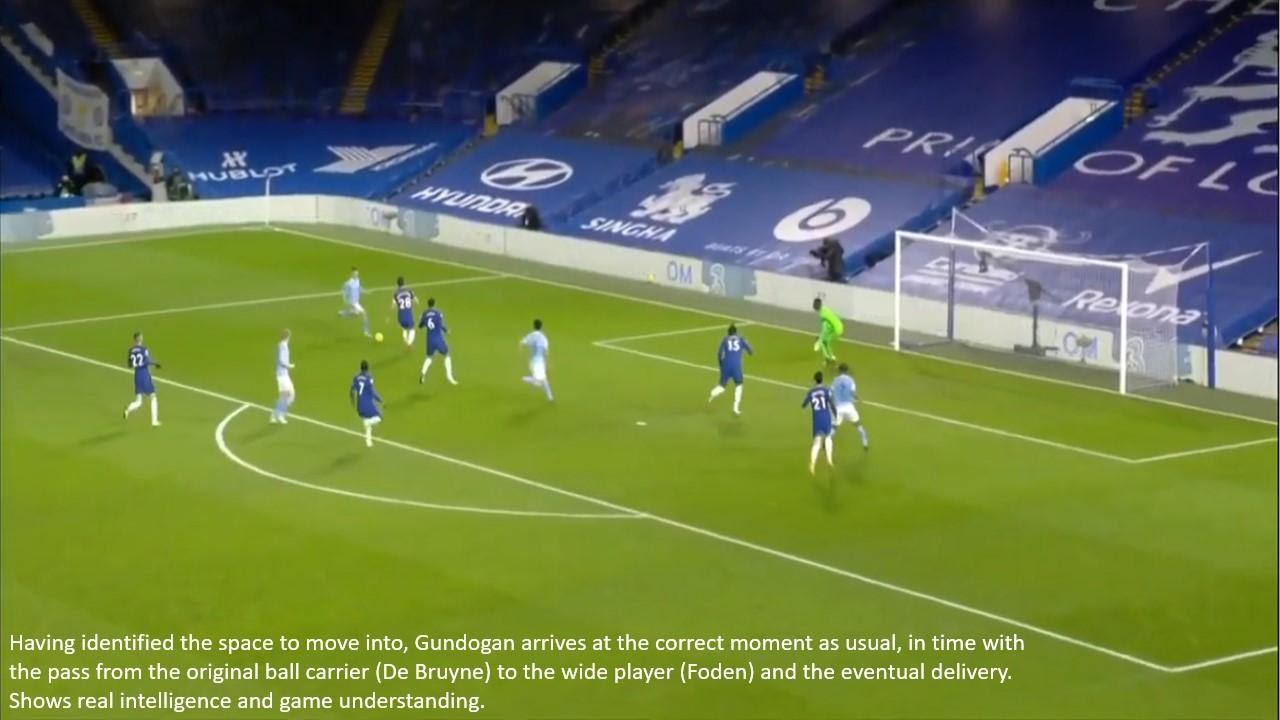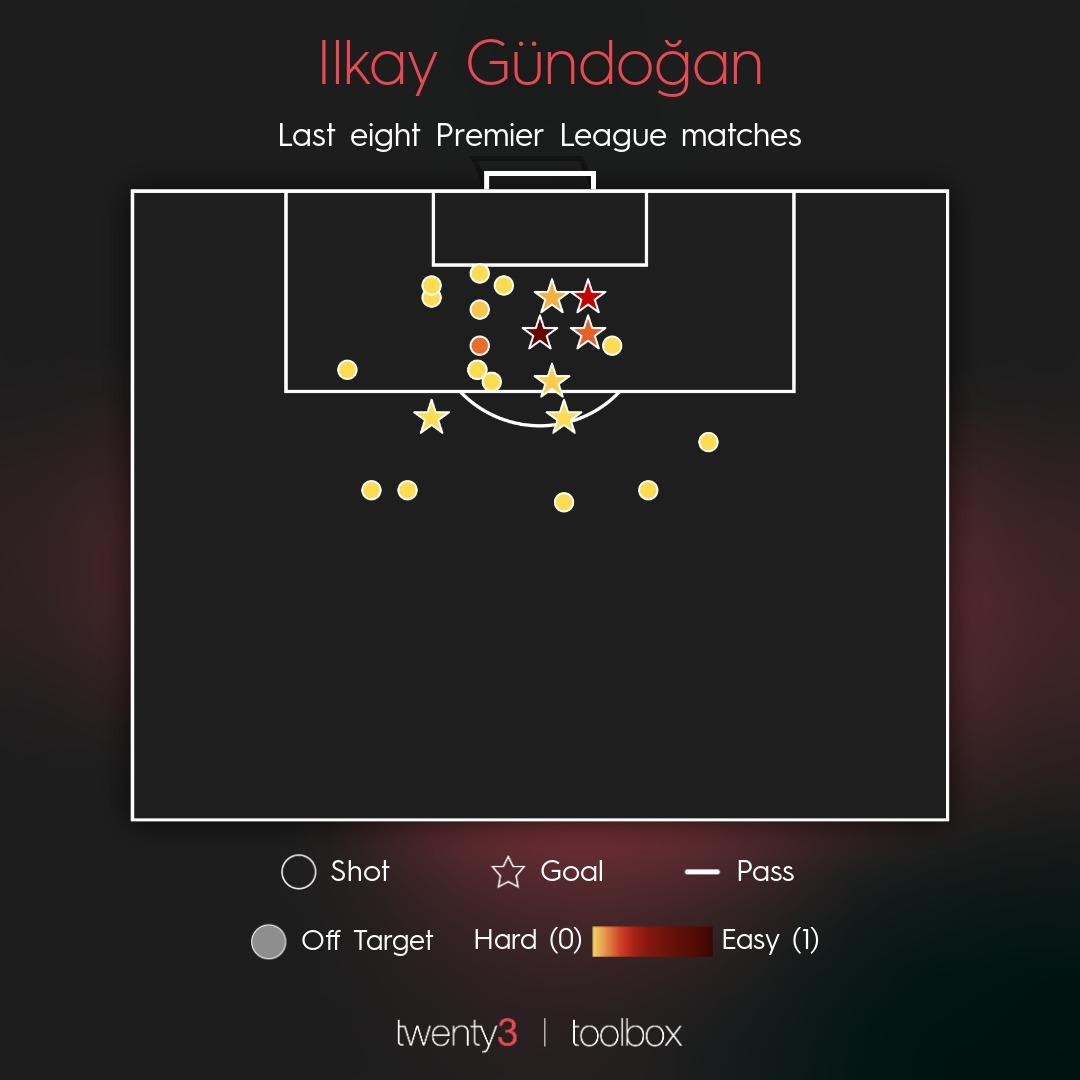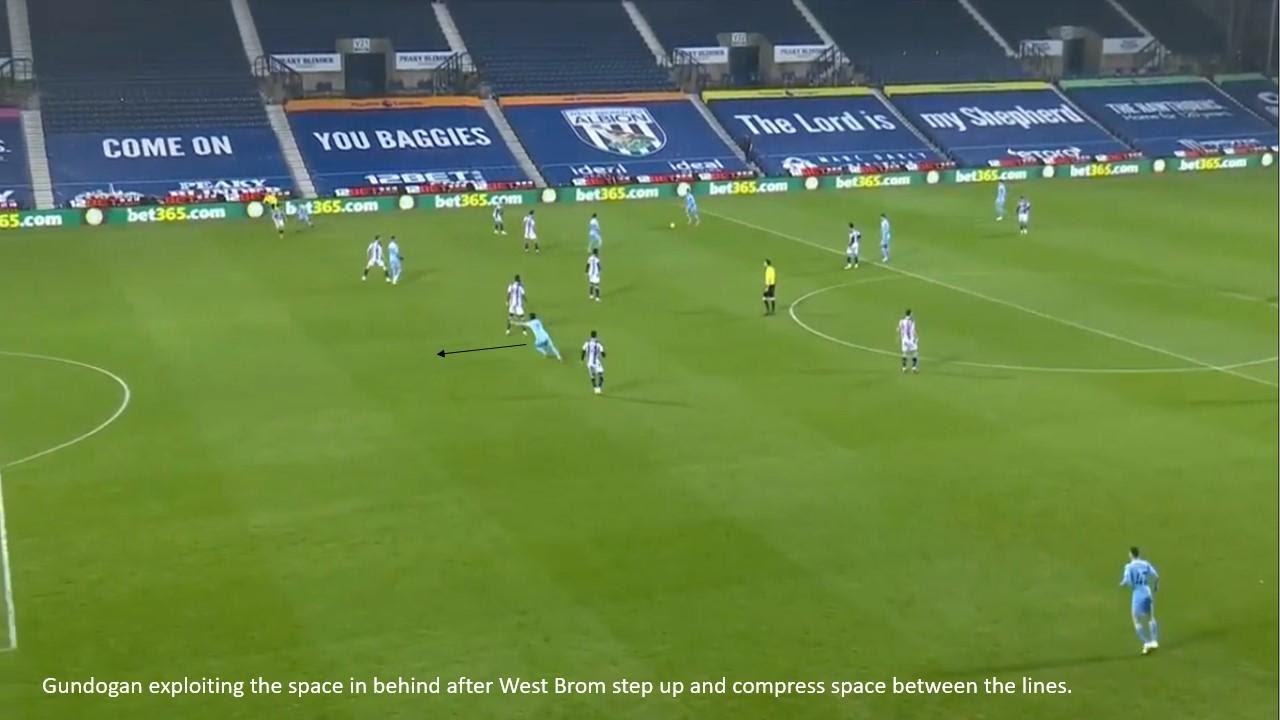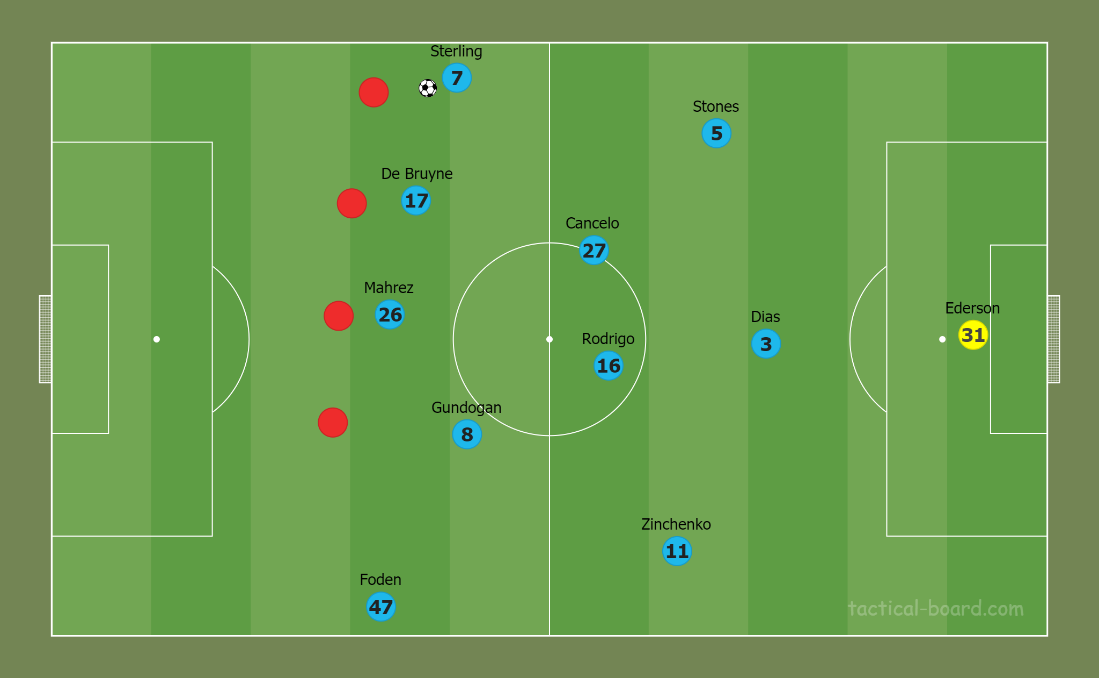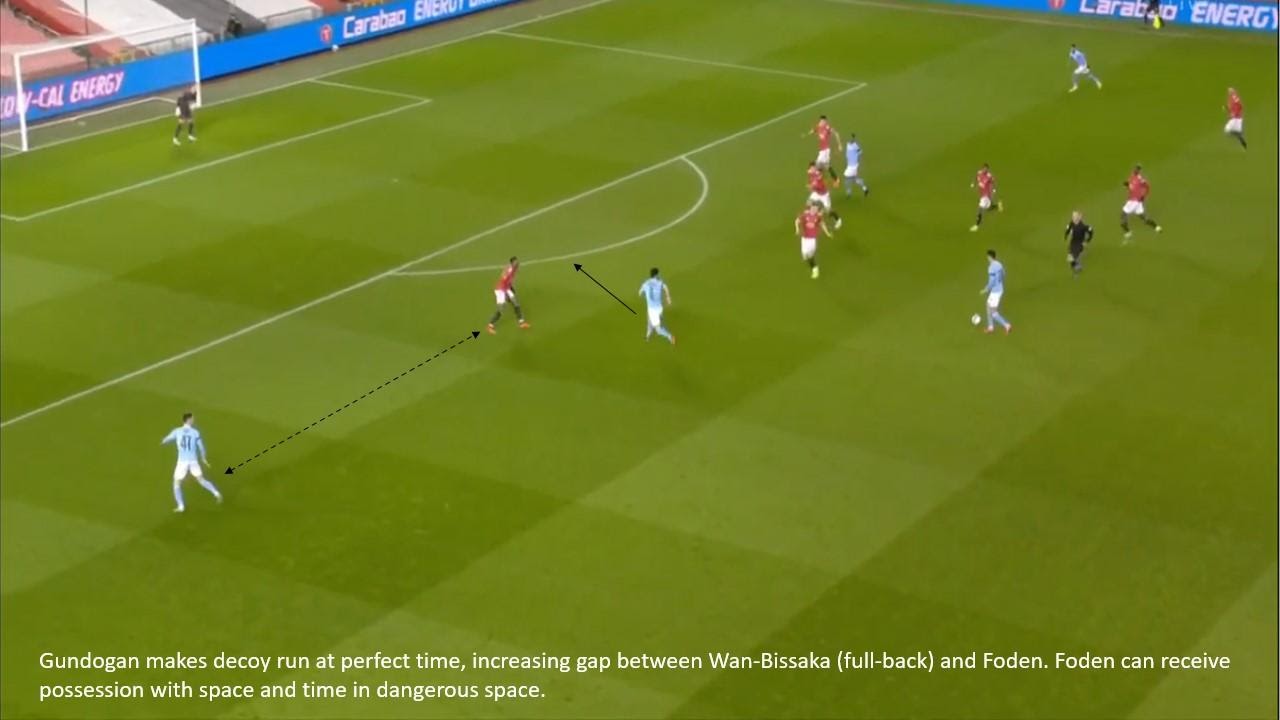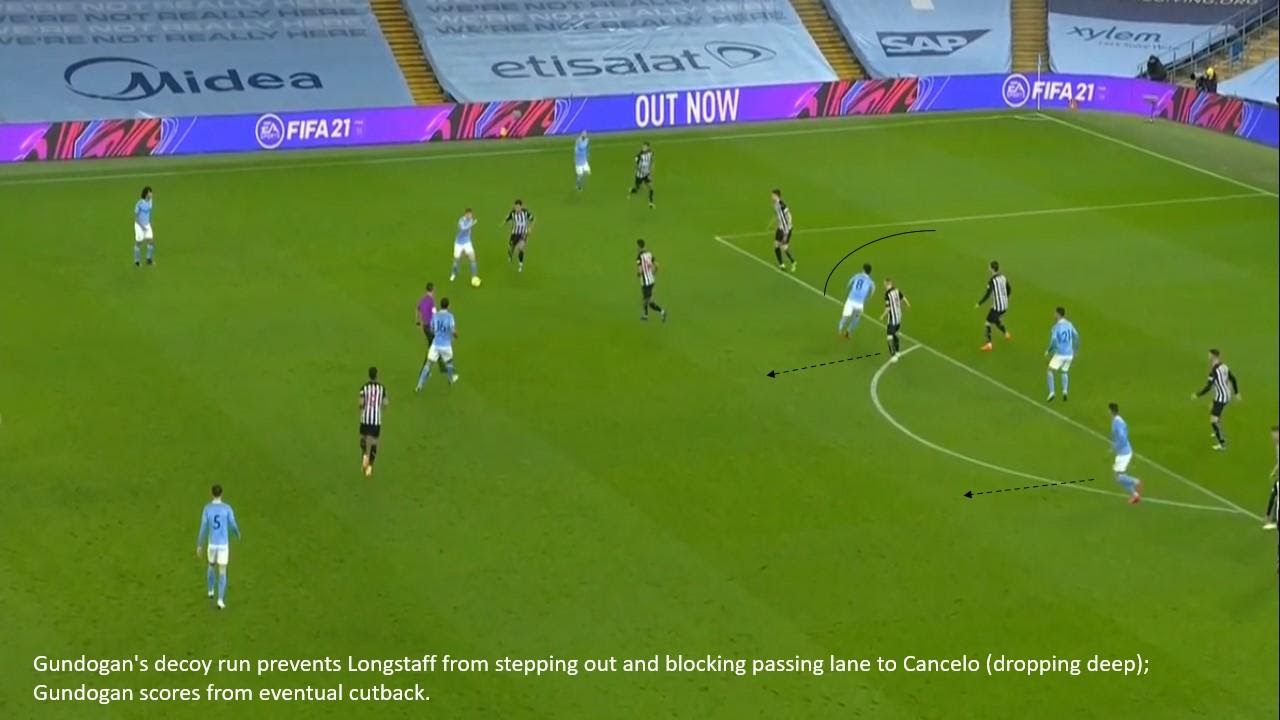İlkay Gündoğan’s Movement in the Final Third
İlkay Gündoğan began his career at VFL Bochum, breaking through their youth academy. He began playing for the club’s reserve team in 2008 before securing a move to FC Nürnberg the following season. His first big move came when Borussia Dortmund acquired him in 2011; he helped Dortmund win the Bundesliga and DFB-Pokal double in his maiden season. After being part of the Dortmund team that reached the UEFA Champions League Final in 2013 under Jürgen Klopp, Gündoğan signed for Manchester City in the summer of 2016 where he became Pep Guardiola’s first signing.
Since his arrival at Manchester City, Gündoğan has found it difficult to sustain a place in midfield. The excellent midfield trio of Fernandinho, David Silva and Kevin De Bruyne guided City to the Premier League title in 2018, as they became the first ‘Centurions’ of the Premier League era by scoring 100 points. This inevitably made it difficult for Gündoğan to break into the side, amid the consistency of the midfield trio.
However, when Gündoğan has played, he has predominantly played in a deeper role, often playing in a double pivot alongside Fernandinho or Rodri. Gündoğan even operated as the lone defensive midfielder towards the back end of the 2018/19 season, a key role to play within the team, which portrays Guardiola’s trust in the German. This trust was repaid as City went on to secure their second title in succession amid fierce competition from close rivals Liverpool.
The responsibilities that the defensive midfielder takes up in Guardiola’s setup are imperative to the success of the team. Responsibilities in possession consist of dropping deep to support build-up play, circulating the ball from the first phase into the second and progressing the ball to attackers in dangerous spaces.
Due to the danger that the attackers possess, the role carries significant weight defensively as the attackers essentially need to be ‘freed’. Out of possession, the defensive midfielder must stay behind the ball to protect the defence from an opposition counter-attack. Gündoğan was viewed as inferior to City’s first-choice defensive midfielder, Fernandinho, due to the lack of defensive nous.
The Brazilian is excellent at sniffing danger and preventing the opposition from breaking successfully, allowing City to sustain attacks. He also possesses great tactical nous, performing tactical fouls to prevent the opposition from exploiting space on the break. It was viewed that Gündoğan did not possess these qualities out of possession despite his excellent technical security with the ball at his feet.
However, due to João Cancelo’s new inverted position which creates the double pivot with the holding midfielder (predominantly Rodri), frees Gündoğan to start higher and occupy a more advanced role where he is enjoying great success as one of the form players in the Premier League. The advanced role has given the German an opportunity to show Guardiola why this is his best role.
Most prominently, it allows him to attack the box when City are in the final third, which is arguably his best trait. His influence in the final third continues to grow. Guardiola clearly appreciates the impact Gündoğan is having in the final third; he said recently that “he’s so intelligent and clever, he understands the game perfectly.”
This article will explain the advantages of playing Gündoğan higher up the pitch, predominantly focusing on his movement and intelligence in the final third which has provided City with the cutting edge they lacked at the beginning of the season.
Arriving in the Box
Manchester City’s excellent form has been inspired by their shape in possession. The fluid 3-2-5 has been extremely advantageous for the team, and also Gündoğan as an individual. The shape has seen him operate in the front five during sustained attacks, predominantly occupying the left half-space when City attack.
This higher starting position (in comparison with the double pivot i.e., Rodri and Cancelo) encourages the German to attack the box on a frequent basis. Simply, there are more opportunities for Gündoğan to attack the box in comparison with his role in the double pivot.
It is also important to mention that the lack of availability of a natural centre forward at Manchester City this season has benefited Gündoğan greatly. Injury problems to both Sergio Agüero and Gabriel Jesus meant that City struggled to score goals at the beginning of the season due to the lack of a natural box presence during attacks.
As such, there is an even greater emphasis on Gündoğan to join attacks and attack the box to compensate for the lack of centre forward. This is likely to be one of the most prominent reasons behind his more advanced position.
This section will explain:
- his spatial awareness to enter the box.
- his timing of arrival in the box.
Firstly, when attacking the box, it is imperative to identify space within the zone before entering. Identifying space is an important skill in football because that is what football is all about – space; offensively it’s about finding it and exploiting it, defensively it’s about protecting it. Identifying space before entering the box is important because the box can often be congested as it is dangerous from a defensive perspective and therefore must be protected in order to minimise space that which the offensive team could exploit.
Constantly scanning before entering/whilst approaching the box can be best practice because it can allow you to understand where defenders and fellow attackers are positioned, in addition, they may be positioned when the ball is delivered into the box. Gündoğan is excellent at this because he possesses high levels of spatial awareness.
Understanding the attack and identifying where space is in the box suggests a high level of intelligence and is an extremely valuable asset to possess in the final third as it can cause attacks to become more dangerous. A prime example of Gündoğan scanning and identifying the space before entering the box is displayed below against Chelsea.
Arguably Gündoğan’s standout ability is arriving in the box at the correct moment. Constantly arriving in the box to meet a delivery at the correct moment is extremely difficult because it boils down to anticipation of where the ball might drop. The difficulty of the skill was explained by James Maddison in a post-match interview after Leicester’s 2-0 win over Chelsea.
When questioned on how he is adding goals to his game, Maddison explained that he was working on arriving in the box. “Almost smelling where the ball is going to drop; it’s not an easy thing to do.” This underlines how difficult it is; arriving in the box is purely down to anticipation and where you believe the delivery from a teammate will drop.
Most prominently, the arrival into the box must be timed to perfection with the arrival of the ball. This essentially means that the run into the box must be well-timed with the player in possession (typically a player who is delivering from a wide area). Again, this is a difficult skill to execute because it requires an excellent understanding of your teammates, knowing when and how they are likely to deliver. As aforementioned, it also requires an understanding of the opposition defenders, and where space may be to attack the box.
This is Gündoğan’s greatest ability; he constantly arrives in the box at the correct moment to meet the delivery. The example below follows on from the image above; this represents the overall passage of the attack and in fact, this section of the article, i.e., scanning before entering to identify the space, entering at the correct moment in time with delivery.
It’s an extremely important skill to possess because it is vital to connect the delivery with a finish. Quite often, teams can work the ball to the by-line (a dangerous position for a cutback/cross) and their cutbacks are cleared by defenders within the congested box. However, Gündoğan’s excellent movement and timing of arrival gives Manchester City a player to target when they work the ball into a crossing position.
There is an even greater emphasis on arriving at the correct moment following crosses and cutbacks as they are a vital aspect of City’s attacking play. This has been evident ever since his arrival, most prominently in the year of the ‘Centurions’. Through ball -> cutback to runners -> finish – a common attacking phase of play under Guardiola. Therefore, Gündoğan is the perfect player to attack the box when City circulate the ball into wide areas.
As expected, Guardiola clearly understands and appreciates the value of Gündoğan in the final third. After the 5-0 win against West Brom at The Hawthorns which saw Manchester City move to the top of the Premier League table, Guardiola said “When he plays close to the box, he has the timing to arrive at the right time. When he arrives, he has the calmness to slow down and make the right decision. I am happy for him”.
Arriving in the box due to this more advanced position has been extremely effective, not only due to the volume of arrivals, but also the volume and quality of the shots from inside the box when meeting a delivery. In the last 8 matches, no Manchester City player has taken more shots or had more attempts in the opposition’s box than Gündoğan, which highlights the emphasis on him entering the box.
Ultimately, the success of the role completely depends on whether or not the player can score goals by applying finishes to arriving at the correct time. The German has been able to add goals to his game; Gündoğan is on his best scoring run since joining the club in 2016. The table below represents how Gündoğan has emerged as City’s top goal scorer across the last 11 Premier League matches. His more advanced role has helped compensate for the lack of centre forward in terms of goals.
Runs From Deep
Runs from deep are different from arriving in the box in the sense that they are initiated from deeper areas rather than close to the box. A run from deep can be extremely useful for two main reasons. Firstly, running from deep is often associated with exploiting space behind the opposition’s defensive line, and therefore it can provide a progressive option.
Secondly, running from deep into the space behind the opposition’s defensive line would typically result in a defender tracking your run and moving with you. Space between the goalkeeper and the defensive line is extremely dangerous space from a defensive perspective and therefore any offensive player who moves into that zone must be tracked.
As a result of this, you are able to disorientate the last defensive line, dragging an opposition defender with you and thus out of position. In doing so, you are able to create more space between the lines for other attacking players to operate and receive the ball in. A run from deep can be a real weapon for an offensive team because it adds dynamism to the attack. It’s different to short, sharp passing on the floor as a run from deep would typically be found by a long pass.
As Gündoğan excels in this area, it gives Manchester City different ways to attack. Gündoğan offers a different dynamic to City’s other attackers who move towards the ball to receive, rather than away from it. In attack, it is important to strike a balance between players who come towards and move away from the ball to receive; Gündoğan provides City with this balance.
Exploiting space in behind via a deep, penetrative run from midfield can be effective when the team is struggling to find a solution with the ball predominantly on the ground (in City’s case). It is generally difficult to find space behind a low block and therefore the pass must originate from a deep position because this will allow the opposition’s defence to step up and increase the volume of space in behind. So typically, this would be evident against a mid-block, or when a low-block steps up.
Gündoğan excels in this area. His understanding to 1) identify and move into the space behind the defence, 2) understand that a deep run in behind will disorientate the opposition’s defence and 3) identify that the player in possession may need a different solution, is extremely impressive. A prime example of this came when City thrashed West Brom 5-0 at The Hawthorns; the West Brom deep block stepped up as City had possession close to the half-way line, so Gündoğan jumped into space in behind to latch onto a lofted pass from Cancelo to open the scoring.
As previously mentioned, running from deep can disorientate an opposition defence because it is likely that your run will be monitored by a defender (unless they are maintaining the line to play offside). This essentially drags a defender deeper, which increases the space between the lines. Gündoğan, again, is excellent at this. It shows a real understanding of the game to move in behind with the intention of receiving the ball, but also knowing if not, you are opening up space for a teammate to move into.
This outcome, i.e., a player receiving the ball between the lines as a result of Gündoğan’s penetrative run opening up space between the lines, means that the movement could be viewed as a decoy run (which the next section will cover), however, it’s different in that Gündoğan’s runs from deep allow him to either receive possession in behind a defence or create space for a teammate, whereas a decoy run solely opens up space for a teammate to receive possession.
Decoy Runs
A decoy run is used as a way of opening up space elsewhere on the pitch (typically for a teammate) in the hope that your run attracts an opposition defender and moves them away from a particular zone or player. It is used frequently in attacking play in order to create space for teammates.
Decoy runs are extremely difficult to defend from a defensive perspective because you are naturally attracted to the man who is moving because they could receive the ball. As a defender, you are unaware that the player making the run is creating space for another to receive it and therefore the run is arguably viewed as more dangerous and thus is typically tracked.
Gündoğan’s position, predominantly in the left half-space, can be perfect for decoy runs when City have possession on the opposite flank. This is because often the opposition defence (a back four) cannot cover sufficient space horizontally to cover Manchester City’s width in attack.
Guardiola likes his wingers to maintain width in order to open up space elsewhere on the pitch, and therefore the wide players are often positioned on the touchline when City go forward. Therefore, the opposition has to engage the ball and commit to the ball side, leaving the far side player (usually Phil Foden) completely free.
As illustrated above, this means that Gündoğan can occupy the opposition right back when the ball is being switched in order to free the left midfielder and drag the full-back away from the ball. The most important factor of this run is when to initiate it; this requires intelligence. Gündoğan knows when to make the run in order to optimise the space and time the player eventually receiving possession will have on the ball.
So, when timed correctly, i.e., just before the pass is played towards the free wide midfielder, you can hold the marker with you for longer than if the run was initiated too early or late, where the defender would inevitably close the space and engage the wide player (because the decoy run would be less likely to receive the ball).
Another example of an effective decoy run that Gündoğan can perform comes during incisive combination play close to the area. From a defensive perspective, when the ball is close to the box, there is an even greater emphasis on tracking runs and following men because the space is dangerous. Therefore, these runs can be extremely useful in order to open up space in a congested zone.
Opening up space in the final third is difficult because the space is so congested, however, Gündoğan’s understanding of the game allows him to do it. Understanding how valuable buying time and space for a teammate in the final third might be is extremely impressive. His movement in the final third simply represents intelligence.
Conclusion
In conclusion, it is clear to see how valuable İlkay Gündoğan’s movement is in the final third to Manchester City. Firstly, when attacking the box, his spatial awareness to identify the space to move into and his timing of arrival allow him to connect with crosses and cutbacks on a consistent basis. His runs from deep help disorientate defensive lines, either allowing him to receive possession in behind in dangerous space or open up space for others.
Finally, his decoy runs help open up space in congested areas, as well as maximising the potential of City’s width in attack. His excellent movement in the final third is ultimately down to his game understanding and intelligence. His understanding of where the space is, when to move into it, and how to create it is arguably second to none in the Premier League. This has been evident throughout.
This article has focused on Gündoğan’s movement in the final third, however, it would simply be unfair not to mention his technical security when in possession which adds even more to City’s attacks. The German is extremely press resistant, can receive between the lines with an open body shape and can shoot from range; he can also contribute to build-up play by receiving deep, which underlines how comfortable he is in possession in each third of the pitch.
His seven goals in Manchester City’s last eight Premier League games are one of the reasons behind their excellent form, following a difficult start to the season. Gündoğan has now cemented a place in the Manchester City line-up despite Pep Guardiola being renowned for squad rotation. Even though things change quickly in football, it’s difficult to see how Gündoğan will lose his place in the starting XI, and for many, it’s difficult to see how Manchester City won’t secure their third Premier League title in the last four seasons if they continue this rich run of form.
By: Ollie Himsworth
Featured Image: @GabFoligno / Nick Potts – PA Images
